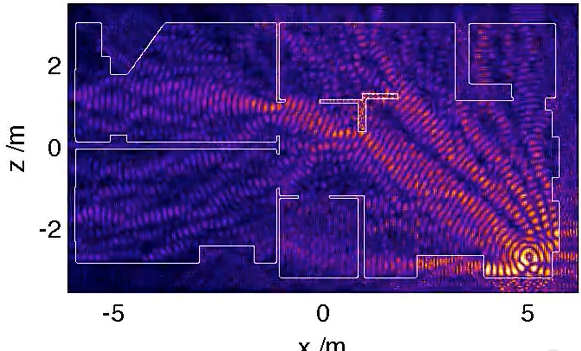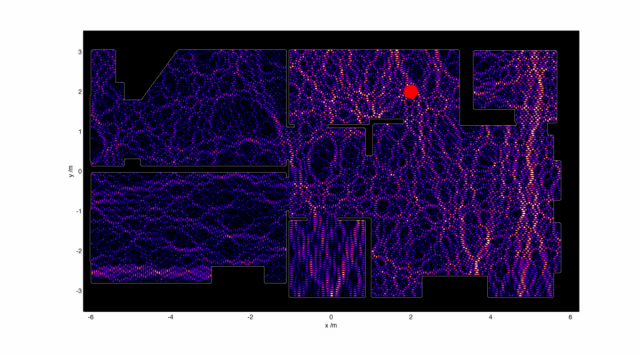
A home's Wi-Fi dead zones are, to most of us, a problem solved with guesswork. Your laptop streams just fine in this corner of the bedroom, but not the adjacent one; this arm of the couch is great for uploading photos, but not the other one. You avoid these places, and where the Wi-Fi works becomes a factor in the wear patterns of your home. In an effort to better understand, and possibly eradicate, his Wi-Fi dead zones, one man took the hard way: he solved the Helmholtz equation.
The Helmholtz equation models "the propagation of electronic waves" that involves using a sparse matrix to help minimize the amount of calculation a computer has to do in order to figure out the paths and interferences of waves, in this case from a Wi-Fi router. The whole process is similar to how scattered granular material, like rice or salt, will form complex patterns on top of a speaker depending on where the sound waves are hitting the surfaces.
The author of the post in question, Jason Cole, first solved the equation in two dimensions, and then applied it to his apartment's long and narrow two-bedroom layout. He wrote that he took his walls to have a very high refractive index, while empty space had a refractive index of 1.

Cole found in his simulation he could get pretty good coverage even with his router in one corner of the room, but could get "tendrils of Internet goodness" everywhere if he placed the router right in the center of the apartment. In a simulation where he gave the concrete some absorption potential, he found a map more like what he expected: excellent reception immediately around the router, and beams that shone into various rooms with periodic strong spots from the waves' interference.
When he introduced time to the system, Cole was able to simulate how his apartment might fill with waves over a certain period and eventually become an oscillating standing wave forming pockets of high activity. For instance, the Wi-Fi signal hits a pretty good curve around the doorway into the second bedroom for good reception in a band a couple of feet wide down the center; there's also surprisingly good signal behind a thick wall in the upper right corner of the floor plan.
Cole writes that making the mapping simulation a Web service would probably be unfeasible due to the intensive calculations and suggested he might "experimentally map the field strength [himself.]" Using an intensive mathematical process, he will have to slowly amble around his apartment, holding a computer, clicking things to see if they go any faster here… or here… or here, like the rest of us.
reader comments
90